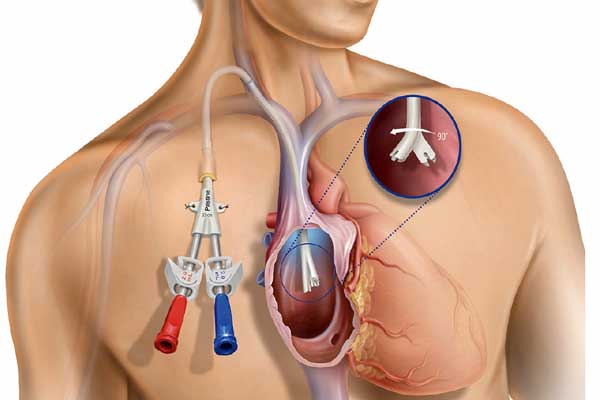Internal Jugular and Femoral Cathter insertion for dialysis
Internal Jugular and Femoral Catheter Insertion for Dialysis
Emergency Access Techniques for Short-Term Hemodialysis
Overview: Dialysis Catheter Insertion
When kidneys fail to filter blood effectively, dialysis becomes a life-saving measure. To perform hemodialysis, doctors must access the bloodstream. Central venous catheters (CVCs) are commonly inserted into large veins, usually the internal jugular vein (IJV) or femoral vein, for short-term emergency use.

Common Catheter Insertion Sites
- Internal Jugular Vein – located in the neck
- Femoral Vein – located in the upper thigh/groin area
1. Internal Jugular Catheter Insertion
Indication
Preferred for short- to medium-term access due to lower infection risks and better blood flow dynamics.
Procedure Steps
- Positioning: Patient lies flat with head turned opposite to the site.
- Anesthesia: Local anesthetic is administered.
- Needle Insertion: Inserted at 45° angle near clavicle into the IJV.
- Guidewire & Dilator: Guidewire placed, then dilator to widen the tract.
- Catheter Placement: Dual-lumen catheter inserted, position confirmed via ultrasound or fluoroscopy.
- Securing: Catheter sutured and dressed sterilely.
Potential Complications
- Pneumothorax
- Carotid artery puncture
- Infection
2. Femoral Catheter Insertion
Indication
Used when IJV access is not viable. Rapid but with higher infection risk.
Procedure Steps
- Positioning: Patient lies flat, legs slightly apart.
- Anesthesia: Local anesthetic is injected in groin area.
- Needle Insertion: Femoral vein accessed with a needle.
- Guidewire & Dilator: Inserted as above.
- Catheter Placement: Dual-lumen catheter placed and confirmed.
- Securing: Sterile dressing and securement.
Potential Complications
- Infection (especially in immobile patients)
- Thrombosis
- Discomfort during movement
Key Considerations
- Catheter Type: Use dual-lumen for efficient blood flow.
- Duration of Use: IJV catheters last longer; femoral for emergencies only.
- Monitoring: Ensure flow rate and catheter patency.
- Operator Skill: Expertise reduces complications.
Conclusion
Both internal jugular and femoral catheter insertions are essential emergency dialysis procedures. Proper technique, careful monitoring, and timely removal are key to minimizing risks and improving patient outcomes.
Contact Our Nephrology Expert
Email: dirnephro@gmail.com
For Appointments Contact: Sanchita at +91 9599471244

Prof (Dr) D Mukherjee is an alumnus of the prestigious Armed Forces Medical College, Pune where he did his MBBS & MD (Medicine). Subsequently he went on to do his DM (Nephrology) from PGIMER Chandigarh, which is the foremost training institution for nephrology in India.